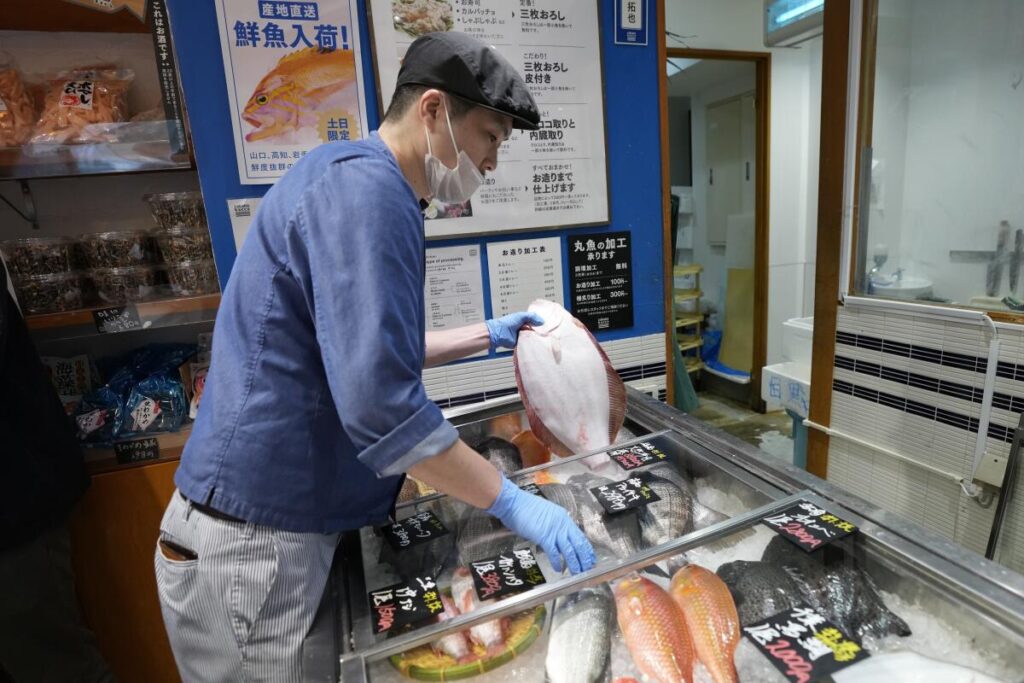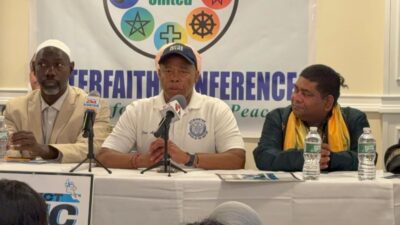
Local fishing communities feared the worst when the wrecked Fukushima nuclear power plant began discharging treated radioactive wastewater into the sea.
Instead of a business calamity, however, consumers from across the nation have supported the region by eating more fish. Besides boosting a fragile industry, the demand has helped mitigate the impact of China’s ban on Japanese seafood, though there are worries about the future of the water release.
“So far, I haven’t heard anyone raising safety concerns over the treated water release. I’d say zero,” Kazuto Harada, who works at Marufuto Fish Store near the Onahama Port in Fukushima, said as he stood by a tank of lobsters caught nearby. “I’m half surprised, and half relieved.”
By late afternoon, almost all the fresh local catch sells out.
It’s less about supporting local businesses than because Joban-mono tastes good, she says. “I’m not worried about the treated water discharge. I’ve been checking sampling results and I trust them.”
The Fukushima Daiichi nuclear power plant started releasing treated and diluted radioactive wastewater into the sea on Aug. 24. Officials said it was necessary because more than 1.3 million tons of radioactive wastewater has accumulated in about 1,000 tanks at the plant since its cooling system was destroyed by a massive earthquake and tsunami in 2011.
Even with the wastewater release, the tanks are estimated to reach capacity in the first half of 2024, and space at the plant will be needed for its decommissioning, which will take decades — if it’s ever accomplished.
Before being released, the water is treated to reduce radioactive materials to safe levels. It’s then diluted with massive amounts of seawater to make it much safer than international standards.
The release, which is expected to continue for decades, was strongly opposed by fishing groups and neighboring countries, including South Korea, where hundreds have protested. Beijing immediately banned all imports of Japanese seafood. It was a major hit to Japanese seafood producers, processors and exporters — especially those in northern Japan who specialize in scallops and sea cucumbers, which are coveted in China.
China’s seafood ban and reports of its impact on the Japanese fishing industry may have tempered Japanese criticism of the water release and encouraged people to eat more seafood from the region.
“Before the discharge began, we were worried that consumers may stay away from Fukushima fish, but we saw a significant increase of our customers asking for Fukushima fish,” said Futoshi Kinoshita, executive of Foodison, which operates the Sakana Bacca chain. “After China’s ban on Japanese seafood, we are seeing more customers buying not only Fukushima fish but also Japanese seafood in general to support the industry.”
He says fish testing data are key to making consumers confident in the seafood’s safety, but the data alone is not enough. “I believe people who are still concerned about Fukushima fish may develop confidence by seeing their friends or relatives eating it without worry, and I hope the circle of confidence will expand.”
The International Atomic Energy Agency concluded in a July report that the discharge, if carried out exactly as planned, would cause negligible impact on the environment and human health. The IAEA safety and sampling missions that visited Fukushima after the discharge began said it was going well so far.
The release of a third batch of water began Thursday, and Tokyo Electric Power Company, the Fukushima plant operator, said everything is moving as planned.
Japan’s government has set up a relief fund to help find new markets and reduce the pain of China’s seafood ban. Measures include the temporary purchase, freezing and storage of seafood and the promotion of seafood sales at home. Cabinet ministers have traveled to Fukushima to sample local seafood and promote its safety, and the United States Embassy in Tokyo has been helping find new markets, including its military bases in Japan.
Despite the wastewater discharges, auction prices at Fukushima fish markets have remained stable — or even occasionally higher than normal.
But Katsuya Goto, a Fukushima prefectural fisheries official, said that the situation is still fragile.
“Any mishap in the seawater discharges and its sampling results would easily hurt the reputation of the fish, so we have to carefully watch and make sure everything is as planned,” Goto said. “The government and TEPCO have begun this despite local fishers’ opposition, so we must watch and make sure they do it right.”
More than two months after the discharge began, the support movement is still growing.
While individual consumers favor ordering fish by mail and shopping at seafood markets, prefectural government cafeterias have started serving Fukushima seafood for lunch.
The Tokyo Metropolitan Government started an “eat and cheer” subsidy campaign in late October, joined by 1,000 seafood retailers through the end of December. The campaign targets customers interested in high-priced seafood like lobsters.




